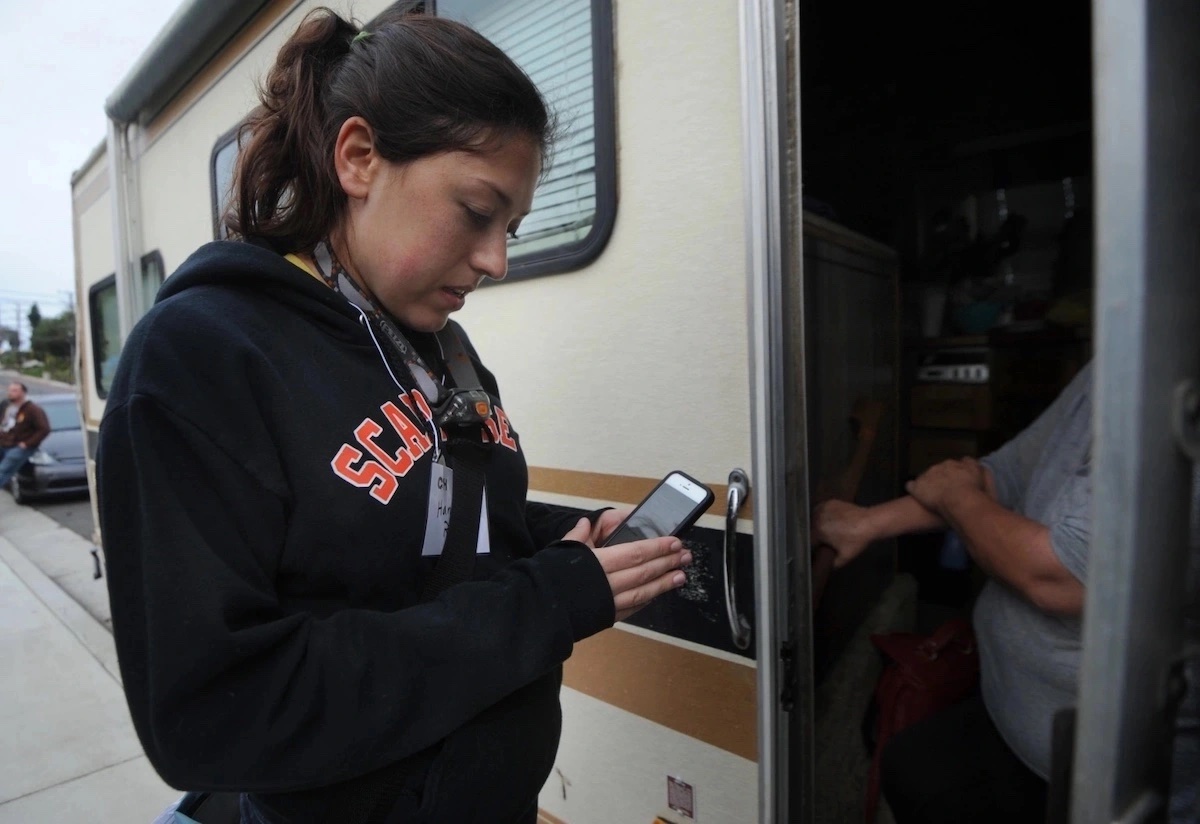Santa Barbara’s 2023 Point-in-Time Count a Success
Volunteers New and Old Covered 100 Percent of County in Their Census of Unhoused Individuals

Early on January 25, 2023, volunteers gathered at stations situated in all parts of Santa Barbara County to participate in the annual Point-in-Time Count (PIT), a census of unhoused individuals that provides essential data to state and federal agencies responsible for supplying aid to address housing and public health issues. Following a rigorous training session designed to ensure that the human dignity and emotional well-being of the subjects of the study remains intact, these volunteers fanned out in small groups to visit, speak with, and document the wide range of people who sleep unsheltered or in vehicles across Santa Barbara County.
This year, the PIT was managed by the Santa Barbara Alliance for Community Transformation (SBACT), a nonprofit organization established in 2005 to “lovingly engage the marginalized while actively working for the betterment of their physical, spiritual, emotional, and mental needs.” After participating in the 2023 PIT, a representative of the Independent reached out to Landon Ranck, the operations manager at SBACT, with a few questions about the latest results.
How many volunteers participated this year? How would you describe the range of people involved in terms of age, background, level of experience with the count, and any other salient features? This year, we had nearly 400 volunteers sign up to participate in the count. About 50 percent of those were returning volunteers, and the other 50 percent were first-time participants. They ranged in age from high schoolers accompanied by an adult chaperone to retirees wanting to remain active in the community. One of the great things about this activity is we see people from every walk of life participate, including those with lived experience of homelessness. We also dispatched several specialized groups to cover those living in encampments, those experiencing homelessness in their vehicles, and unhoused youth.
Were you able to accomplish what you set out to do? What were some of the successes of the 2023 PIT? What were the obstacles this time around? We were very pleased with this year’s effort. We were able to achieve 100 percent geographic coverage throughout Santa Barbara County and feel confident that we got a comprehensive count as a result. We also had a strong vehicle count thanks to the participation of New Beginnings Counseling Center’s Safe Parking Program staff in the planning and the count itself. While the youth PIT Count is historically difficult to conduct, we have a strong group of dedicated youth service workers and youth volunteers that assisted to ensure we were able to capture this population as well.
As far as obstacles, the recent rains resulted in the relocation of many people who had previously been residing in low-lying areas. Additionally, certain “known location” areas had been cleared in anticipation of the PIT by various entities.
When will the results be available? What happens to the information gathered by the PIT? A report will be provided to the Continuum of Care board and the public on March 2, 2023. The Point-in-Time Count is the only source of nationwide data on sheltered and unsheltered homelessness and is required by HUD of all jurisdictions receiving federal funding to provide housing and services for individuals and families experiencing homelessness.
Currently, the Santa Barbara County Continuum of Care receives approximately $2.5 million annually in federal funding, which is a key source of funding for the county’s homeless services. Continuums of Care report the findings of their local Point-in-Time Count annually to HUD. This information ultimately helps the federal government to better understand the nature and extent of homelessness nationwide. Point-in-Time Count and survey data also help inform communities’ local strategic planning, capacity building, and advocacy campaigns to prevent and end homelessness.
Could you relate the concept of “collective impact” to abolishing homelessness and the PIT? The PIT Count is a prime example of the importance of a collective impact approach to addressing major social issues. The PIT Count requires all of the key components of collective impact, including: (1) coordinating agencies (in this case, the Santa Maria/Santa Barbara County Continuum of Care and SB ACT), (2) a shared measurement system, and (3) mutually reinforcing activities undertaken by service providers, government agencies, volunteer groups, community members, and individuals with lived experience of homelessness! Issues as complex as homelessness will never be solved by one agency working alone — we need coordinated efforts with everyone (I mean everyone!) working together.
Support the Santa Barbara Independent through a long-term or a single contribution.



